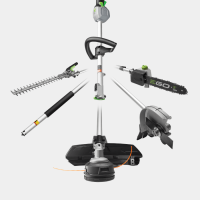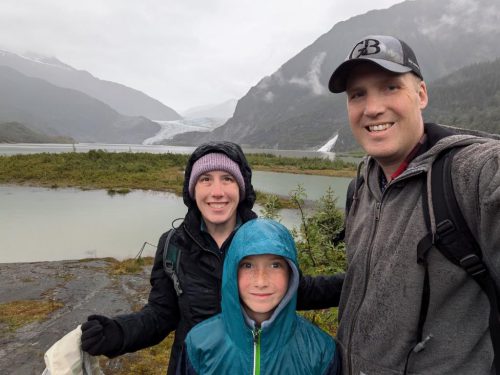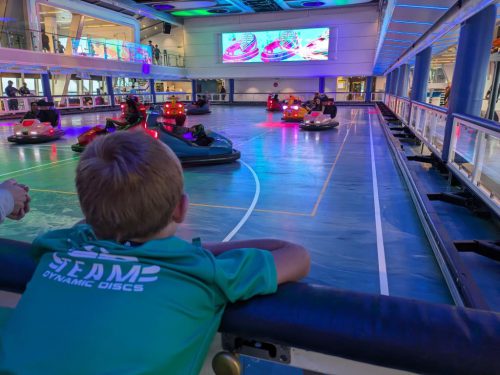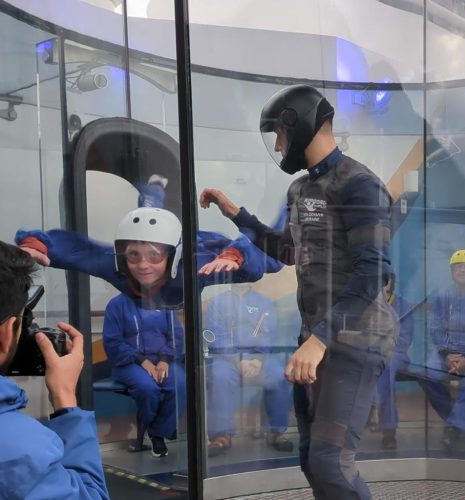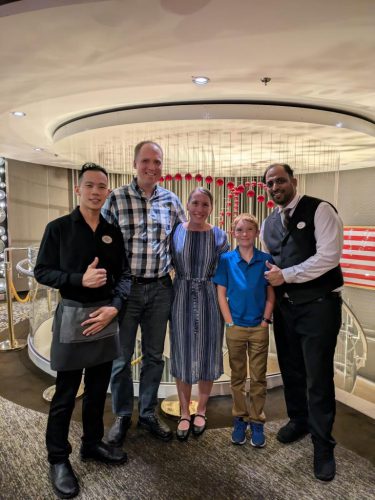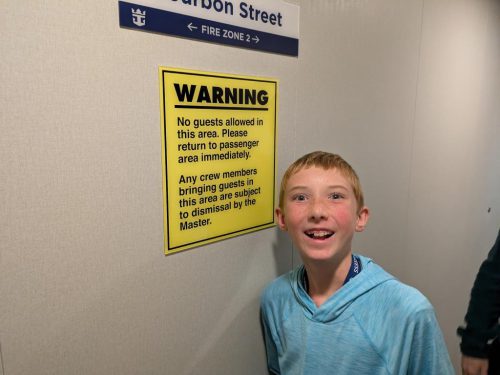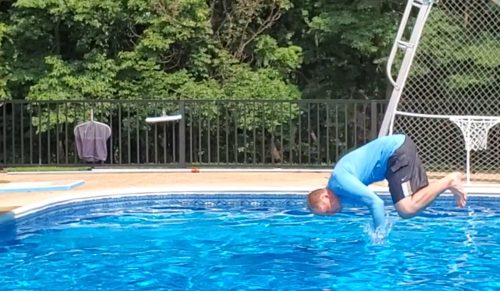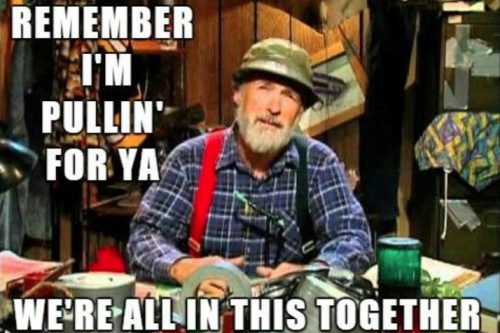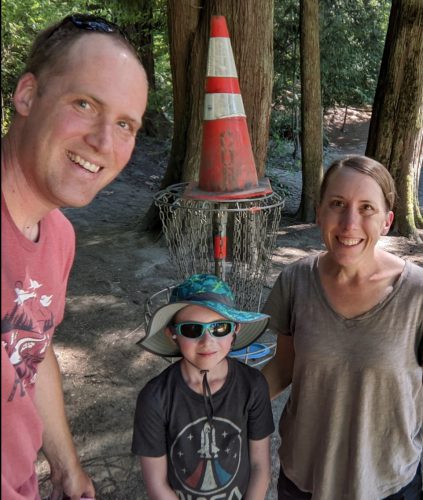When I started playing disc golf towards the end of last summer, I started learning that I was right in the middle of a big surge of interest in the sport. It really spiked when COVID hit and the interest has continued. UDisc is the most popular app for tracking scores and finding courses. They have an annual report about the growth of the sport if you’re interested in stats.
It’s been a big hit in our house because it’s something that all three of us can enjoy, and it’s generally free. UDisc says that 90% of all disc golf courses are free to play. You can get a starter set of three discs for about $30 and I used my starter set for a very long time before buying some specific, fancier discs for $15-20/each.
I’m writing this post because I realized there have only be a couple blog posts that mention disc golf. Considering how much I have been playing, that feels a bit off, so I thought I’d use this post to answer some of the questions I had as I got into it:
Where do you play? There are courses at lots of local parks. UDisc says that 28% of Americans live within 2 miles of a course and 88% are within 10 miles. You can find them by going to https://udisc.com/courses or searching on internet maps. I’m lucky to live near a great course at Blyth Park in Bothell.
It seems intimidating. How do I not look like a moron? This is the biggest thing that held me back from playing. I regret the time I lost worrying about this. Disc golfers are generally super friendly! With so many people joining the sport, you’re probably not the only newbie out there. If you don’t know what to do, find somebody else who is playing and just ask them. Or if you look confused, someone will probably offer to help.
What do you do? When you get to the course, find the first tee. Sometimes there’s a map showing all the holes. Or if you have the UDisc app, it will show you a map of the course with your current location noted. That app is really helpful as you go from hole to hole looking for the next tee. Once you’ve found the first tee (usually some kind of a concrete or dirt pad about 2 feet by 6 feet), throw your first shot. Walk up to your disc, make sure one foot is right behind where your disc landed, and throw your next shot. Eventually you’ll make it to the basket and your disc must end up in the basket. Count your strokes and move on to the next tee.
How long does it take? My local course has 10 holes. (9 and 18 hole courses are the most common but it’s not super rare to have a different number of holes.) I can play a round by myself in 30-40 minutes, but obviously if there’s a lot of traffic on the course that can slow things down a bit.
What is the etiquette? If you’ve ever played traditional ball golf, a lot of etiquette is very similar. Some general guidelines are:
- Wait until the people in front of you are out of range before you throw. Generally this means waiting until they’re done with the hole.
- Yell “Fore!” if your disc is heading toward someone else.
- Whoever is farthest from the hole throws next.
- Play “ready golf” by knowing which disc you’re going to use and being ready to throw when it is your turn.
- Be aware of people throwing on holes near you. Disc golf courses can be tight and it’s easy for errant shots to veer into neighboring holes.
What’s the difference between a disc golf course and a traditional/ball golf course? While both have “tees” and “fairways” and conceptually are similar, the physical appearance can differ in a few ways:
- Disc golf holes are shorter. Most holes will range between 200-350 feet if they are beginner-friendly while long/pro holes can stretch over 1000 feet in some extreme cases.
- Disc golf courses have a lot more variety. Courses might be set in thick woods, an open field, zig zagging across an old golf course, etc.
- Disc golf courses make a lot more use of natural terrain and obstacles and some will even include man-made obstacles like a tall fence stationed at a key point in the middle of the fairway to make the hole more interesting.
- Some disc golf holes include a “mando” (short for “mandatory”) which means that you must go to the right or left of a specific obstacle.
- There’s no “green” for disc golf. There’s an imaginary circle around the basket with a radius of 30 feet and there are slightly special rules in that zone, but generally this isn’t explicitly marked.
Why do my discs always go to the left? Because of the physics of a disc, most discs will curve to the left, especially at the end of their flight. As people get better and can put more speed and spin into the disc, they can have different flight characteristics depending on the disc. As a beginner, I just plan for the curve.
Do discs get lost? Yes. Most people write their name and phone number on the back of the disc and people are pretty good about calling or texting if they find your disc. Thankfully I haven’t lost a disc yet, but I’ve probably spent more time than is reasonable looking for lost discs. Losing a disc isn’t as common as losing a golf ball though which is good because people get more attached to their discs as they learn how each specific disc flies.
What are some good sources for learning? I subscribe to quite a few disc golf channels on YouTube. Here are three of my favorites. All of these have a lot of videos so click on their playlists section to zero in on content that interests you.
- Robbie C Disc Golf – Robbie has a lot of beginner friendly videos and always focuses on mechanics that are helpful to average players.
- Overthrow Disc Golf – Josh was a full time professional tennis coach before switching primarily to teach disc golf. He is excellent at breaking down body mechanics into simple steps.
- Foundation Disc Golf – Foundation is mainly an online store that sells discs, but they have a fun YouTube channel as well. There is a ton of content of them playing rounds with various tweaks to the rules (like only using the worst selling discs in their store, playing doubles but taking the worst shot, etc.)
- JomezPro – Over the past few months, Elijah and I have started watching the final round of the touring pro tournament series. JomezPro posts very nicely produced coverage of the rounds 12-24 hours after they finish. It’s wild to see what the pros can do and it’s interesting to get to know the various players in the game.
Can you be a professional? I guess I answered this with the JomezPro recommendation above, but one of the most interesting parts about disc golf for me is that anybody can be ranked on the same charts as people who get paid to play the game. If you join the PDGA for $50/year, as soon as you play in a sanctioned tournament, you’ll be assigned a rating. Your rating goes up and down every time you play in a sanctioned tournament so you can directly compare your skill level against the pros. On the PDGA website, you can see how much money everyone makes in tournaments. As a local player, you’d be doing very well to make a couple hundred bucks a year. The highest level pros would do well to make $100,000/year from tournaments, but they are likely to have additional sponsorships that make them more than that. Estimates are that the highest paid pros may be making around $500,000/year but that’s a guess.
It’s a deep rabbit hole, but you can easily play casually and have lots of fun. According to my UDisc app, I’ve already played 19 rounds this year (39 last year). With the longer days and drier weather, I’m able to head to the park quickly after Elijah goes to bed to play a round in the evenings. It’s a relaxing way to get away from the computer screen for a while and get some fresh air. I’m more than happy to play a round with you if you live near me and are interested!

